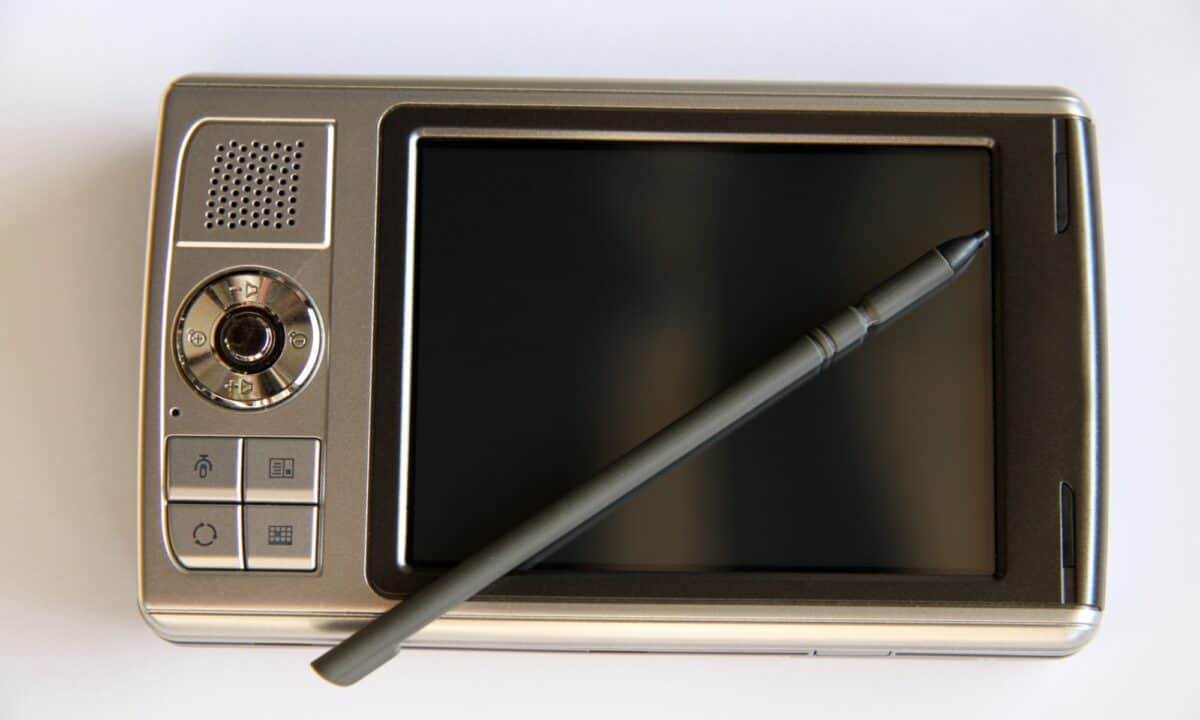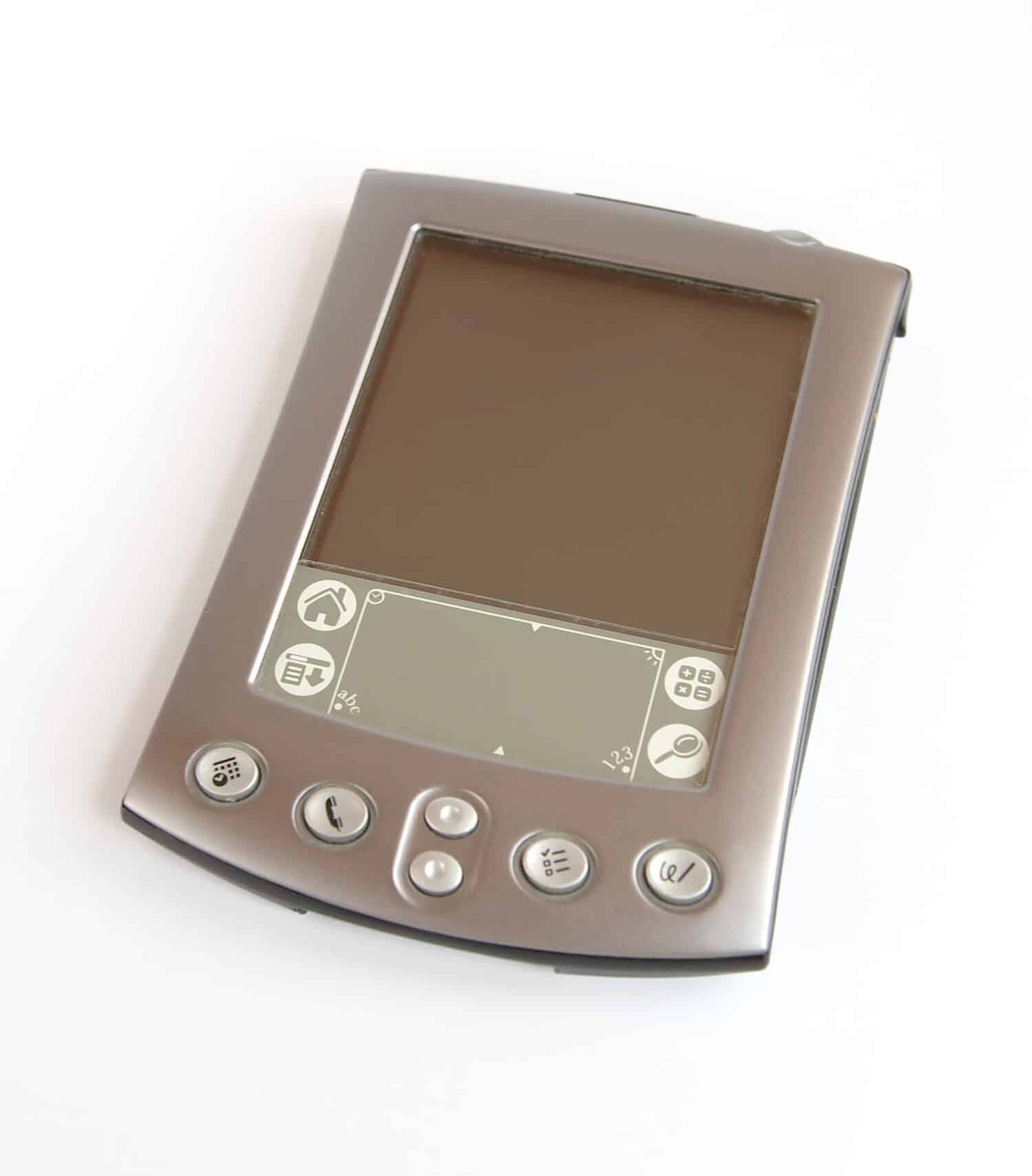The Palm Pilot was created by Jeff Dawkins, Donna Dubinsky, and Ed Colligan and was initially released in March 1996. The Palm Pilot was a PDA device which could be used to take notes, manage and view documents, manage contacts, and even play games. Some later models could also be used to send text messages and multimedia files, surf the web, take photos, and record videos. The original Palm Pilots had 128 kilobytes of RAM, a 16 MHz processor, and a monochrome touchscreen. However, they were updated as newer versions were released. None the less, the Palm Pilot was eventually discontinued in 2011, although some models do still exist.
Read on to discover the history of the Palm Pilot, including how many versions there were and what they originally cost to buy.
Palm Pilot: History

.
©Ben185/Shutterstock.com
The Palm Pilot was designed by Ed Colligan, Donna Dubinsky, and Jeff Hawkins. In 1992, they founded Palm Computing which manufactured the device. The PDA was released in March of 1996. By this time, U.S. Robotics had purchased the company. Palm Computing originally focused on developing personal information management and handwriting recognition applications. The applications were named PalmPrint and PalmOrganizer. Further research convinced the founders that they could design quality hardware as well.
The Palm Pilot 1000 and 5000 were the original PDAs. They could play some games and included basic applications. The PDAs featured 128 kilobytes of RAM, a 16 MHz processor, and a monochrome touchscreen. Between 1998 and 2000, the Palm Pilot Personal and Professional were released. The Personal had an initial price of $299, while the professional had a price of $399. They used Palm OS 2.0 and featured backlit screens. The Personal had 512 kB of RAM, while the Professional featured 1024 kB. After these devices, a wide variety of PDA phones were designed until they were discontinued in 2011.
Facts About the Palm Pilot

.
©Taylor729/Shutterstock.com
- The original Palm Pilot was manufactured by Palm Computing
- The prototype PDA was named the “Palm Taxi”.
- The original PDA models did not have flash memory, backlighting, or an infrared port.
- The original PDA weighed 5.7 ounces.
- Two AAA batteries powered the first Palm Pilot.
- The ability to synchronize with desktops made the PDA phone extremely popular.
- Original applications included games, Address Book, Calculator, Memo Pad, Date Book, and Expense.
- Later Palm Pilot models came with applications for videos ,photos, web surfing, and sending texts.
- Palm OS 1.0 executed applications within RAM.
- Palm OS 3.5 was the first OS to support native 8-bit color.
Palm Pilot Versions: Each Edition
Original Versions 1996
- Palm Pilot 1000
- Palm Pilot 5000
1998-2000 Versions
- Palm Pilot Personal, Palm Pilot Professional
- Palm III, Palm IIIe, Palm IIIx, Palm IIIxe, Palm IIIc
- Palm V, Palm Vx, Palm VII, Palm VIIx
- Palm m100, Palm m105, Palm m125, Palm m130, Palm m500, Palm m505, Palm m515, Palm i705
- Handspring Visor, Handspring Treo 90, Handspring Treo 180, Handspring Treo 180g, Handspring Treo 270, Handspring Treo 300
2000-2009 Versions
- Tungsten E, Tungsten E2, Tungsten T, Tungsten T2, Tungsten T3, Tungsten T5, Tungsten W, Tungsten C, TX
- Zire, Zire 21, Z-22, Zire 31, Zire 71, Zire 72
- Treo 600, Treo 650, Treo 700w, Treo 680
The Public Response

©Letdorf, CC BY-SA 3.0 via Wikimedia Commons – Original / License
The original Palm Pilot hit the market in 1996. It wasn’t an instant hit but gained in popularity each year. By 1998, over 30 million devices had been sold. Palm Pilots were popular for many reasons such as games and the ability to sync with desktops. However, they were eventually replaced by newer devices such as smart phones and tablets.
What Happened to Palm Pilots?
As we’ve just mentioned, Palm Pilots were eventually replaced by smartphones and tablets. However, the decline began in 2003 when Palm, Inc. merged its hardware division with Handspring (a company founded by former Palm employees and executives which specialized in devices such as Treo smartphones) and was renamed PalmOne. In 2005, PalmOne shifted its focus towards smartphones and was rebranded as Palm, Inc. once again. The Palm Pilot began being phased out at this time as Palm developed a new operating system called webOS to power devices such as the Palm Pixi smartphone. However, Palm struggled to compete with other established smartphone providers. Eventually, Palm was acquired by HP in 2010 and the Palm brand was phased out in 2011.
Up Next
- Palm — Complete Guide: History, Founding, Products, and More — Discover the full history of Palm, including which were its best products.
- Simon Personal Communicator: A Complete Guide — Discover the device which holds the title of being the world’s first smartphone!
- 10 Reasons to Buy a Smartphone Today (And Which Are Best!) — If you don’t already have one then take a look at these top reasons for buying a smartphone.